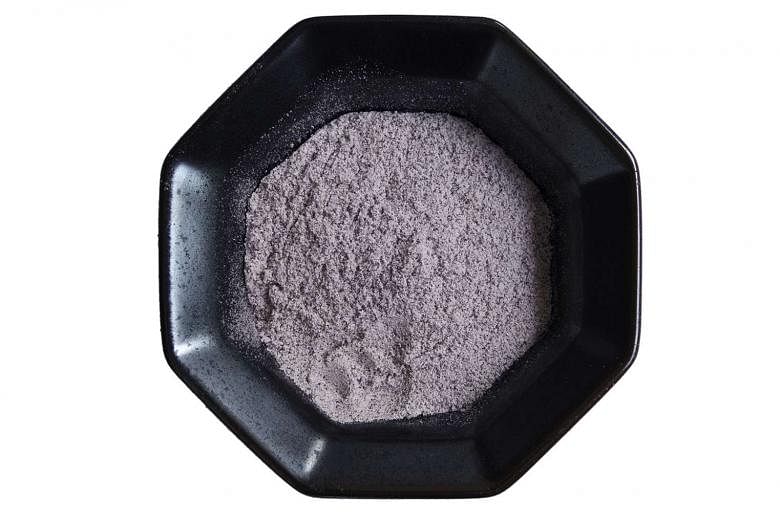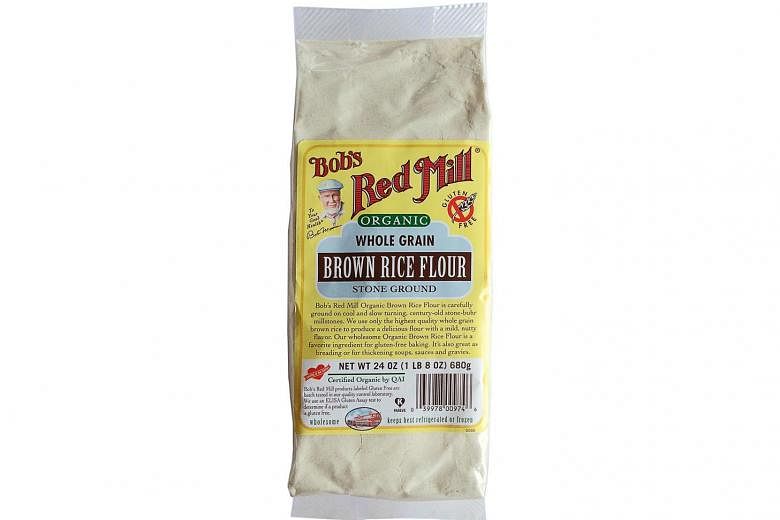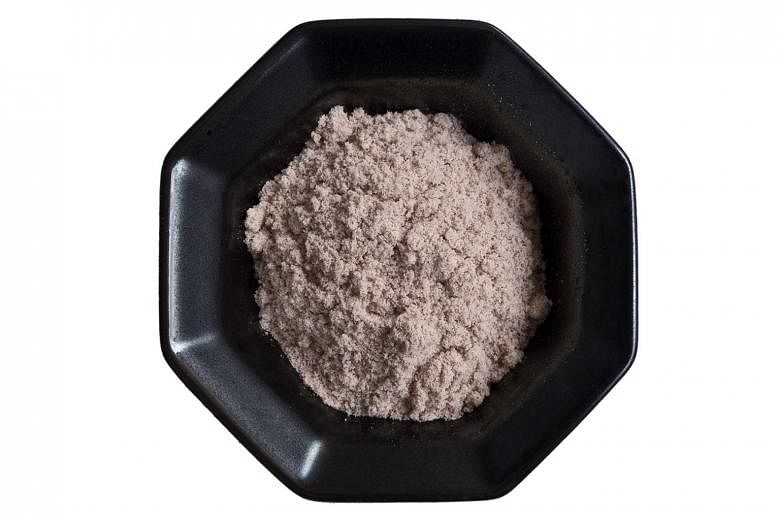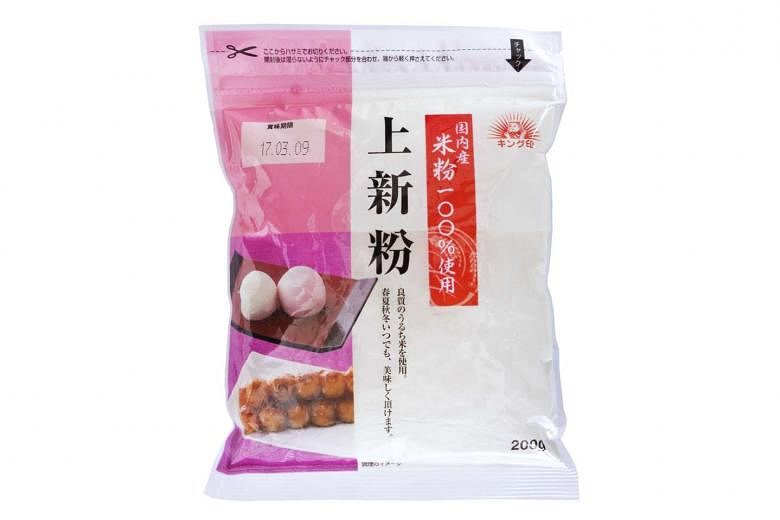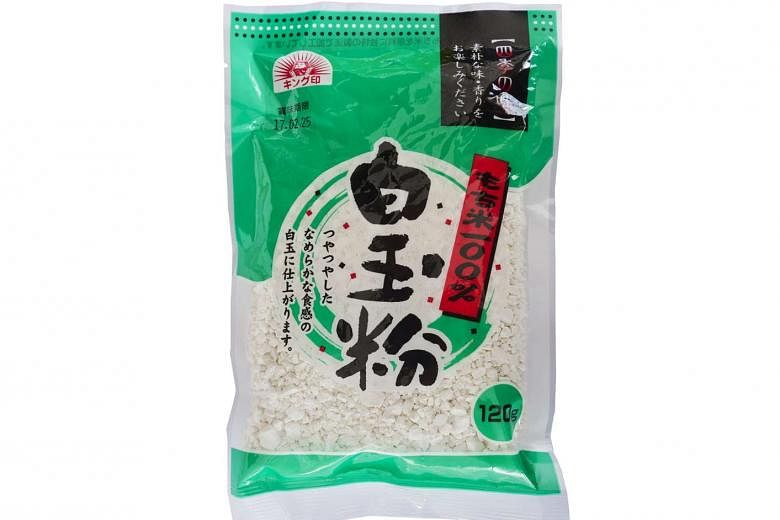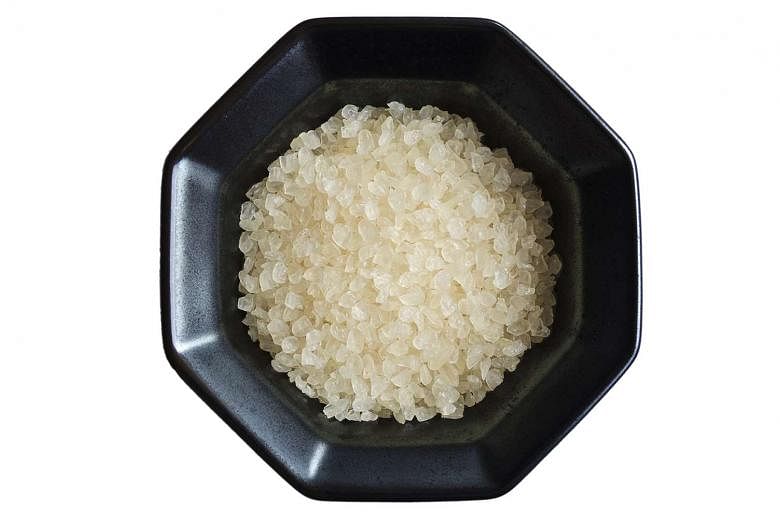Flour ground from different rice varieties are pantry staples across Asia and becoming more common globally. Here is a guide to types available in local supermarkets and stores.
• White rice flour: Milled from long-grain rice, very fine and powdery. Most brands sold locally are made from Thai rice. The foundation of many Asian savoury and sweet dishes, it is used to give structure and solidity to noodles and kueh, and also as a thickener for sauces, puddings and porridges. Increasingly popular these days as a partial substitute for wheat flour in gluten-free cooking.
• White glutinous rice flour: Milled from long-grain glutinous (sticky) rice, most commonly from Thai sources. Slightly silkier to the touch than regular rice flour, it yields stickier, denser and more elastic textures. Indispensable in many Asian recipes, especially kueh.
• Black glutinous rice flour: Milled from black glutinous rice and retaining its floral-earthy aroma. Also known as ketan hitam or tepung pulut hitam, this slightly gritty lavender-grey flour takes on a deeper purple-black colour when hydrated. Used in many traditional Indonesian, Malaysian and Thai kueh.
• Brown rice flour: Made from rice grains with the bran layer intact, and processed and stabilised to avoid the enzymes and fat molecules, both present in the bran, from reacting to form bitter- tasting substances. Pale beige in colour, it is typically a bit coarser than white rice flour, and has a stronger flavour. Often used to boost structure, flavour and fibre content in gluten-free baking.
• Unpolished red rice flour: Milled from lightly roasted unpolished red rice grains. Sold at Indian stores, where it may be labelled "chemba puttu podi", as it is made into puttu, a south Indian steamed rice and coconut bread. Pale terracotta in hue, it has a light nutty fragrance and can be used in the same way as brown rice flour.
• Roasted rice powder: Raw long-grain glutinous rice grains, roasted in a dry wok until brittle and lightly browned, then ground to a pepper-fine powder. Sold at Thai stores and used to season and bind Thai dishes such as larb (minced meat salad). In northern Chinese cuisine, raw long-grain regular rice is similarly roasted, seasoned with spices and coarsely ground to make crumbs used to coat meat and seafood pieces before they are steamed.
• Rice farina: Sold at health food stores, this is brown rice ground into granules about the same size as coarse polenta or sugee (semolina). It is designed to be cooked with liquid in the same way as those items, slowly simmered with frequent stirring, though it has a more viscous final texture. Used in cereal and puddings, and Indian dishes such as uppuma and payasam.
• Joshin-ko: Flour milled from Japanese short-grain rice, used in dishes such as dango (rice balls, often served on skewers). It makes a chewy, dense and lightly sticky dough. Japanese flour labelled "dango-ko" is sometimes a blend of joshin-ko and mochi-ko.
• Mochi-ko: Milled from washed and dried Japanese short-grain sticky rice. Used in sweet and savoury mochi cakes, it lends them a distinct aroma and texture different to those imparted by long-grain glutinous rice flour.
• Shiratama-ko: A wet-milled flour. Japanese short-grain sticky rice is washed, soaked and ground while wet, the excess liquid then pressed out, and the starch residue dried and crushed into coarse pebbly fragments. Thanks to the extra hydration, mochi made with shiratama-ko has a smoother, more stretchy texture compared to mochi-ko.
• Domyoji-ko: Japanese short- grain regular rice that is cooked, dried, then pounded into very coarse, glassy granules. Used for specific dishes, such as sakura mochi, red bean paste balls coated in rehydrated domyoji-ko.
• Storing rice flours: Keep in tightly sealed bags in a cool, dry place. Use them up promptly once the pack is opened. Brown, black and unpolished rice flours are more perishable than white rice ones and should be kept refrigerated if possible.
